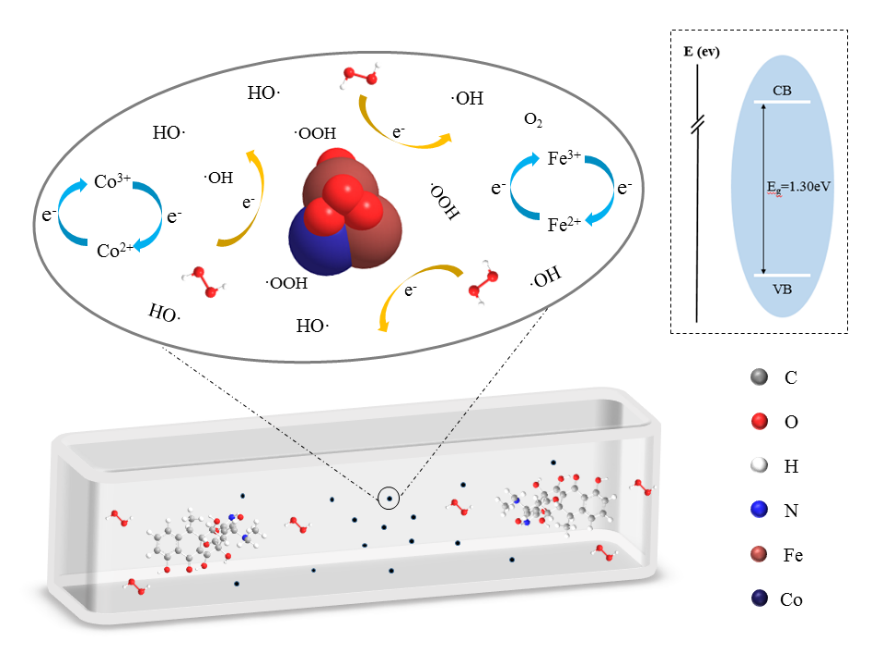Jul 6 2020
Researchers from China recently synthesized a highly active surface-exposed CoFe2O4 catalyst used to activate H2O and subsequently to produce free radicals. The catalyst could quickly eliminate doxycycline pollutants from water.
 The schematic of activation mechanism in the CoFe2O4/H2O2 system. Image Credit: HONG Peidong.
The schematic of activation mechanism in the CoFe2O4/H2O2 system. Image Credit: HONG Peidong.
The study was recently performed by KONG Lingtao and his colleagues from the Institute of Solid State Physics, Hefei Institutes of Physical Science.
Doxycycline (DC), which is a semi-synthetic tetracycline antibiotic, exhibits strong antibacterial activity and fewer side effects. It is extensively used in medical and aquaculture industries.
However, the rapid development of industry has led to more antibiotic residues found in water, even in drinking water. Such residues place not just human health but also the environment at huge risk, even when found in small concentrations.
The team used a solvothermal technique to produce the CoFe2O4 precursor. For this, sodium acetate was as a buffer. The precursor was then calcined at a temperature of 550 °C to achieve a well-crystallized, uniformly sized CoFe2O4 catalyst.
The synthesized catalyst was found to have an expanded specific surface area that exposed more adsorption sites through its rough surface. The outcomes of the degradation experiments revealed that using 1.2 g/L CoFe2O4, 92% of 20 ppm DC could be eliminated under neutral pH conditions within 10 minutes.
Apart from synthesizing the catalyst, the researchers also performed mechanism analysis. Their further study showed that the active sites exposed on the CoFe2O4 surface could quickly activate H2O2 within a short time and could be used to synthesize a large number of strong oxidizing species OH. This led to the degradation of the adsorbed DC in the restricted range.
Two probable degradation pathways were proposed by integrating DFT calculation and LC-MS data.
This study overcomes the conventional Fenton’s stringent pH barriers and offers new concepts for the deep and rapid elimination of micro-pollutants in water through the use of nanomaterials.
This study was financially supported by projects and units such as the National Key R&D Program of China, the Anhui Provincial Major Science and Technology Project, the National Natural Science Foundation of China, and the USTC Supercomputing Center.
Journal Reference:
Hong, P., et al. (2020) Rapid degradation of aqueous doxycycline by surface CoFe2O4/H2O2 system: behaviors, mechanisms, pathways and DFT calculation. Applied Surface Science. doi.org/10.1016/j.apsusc.2020.146557.